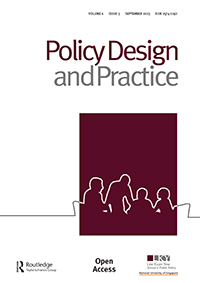欧洲各国政府采用COVID-19接触者追踪应用程序
IF 2.6
Q1 PUBLIC ADMINISTRATION
引用次数: 46
摘要
摘要接触者追踪可以定义为识别和监测与感染者有过接触的每个人。然而,手动接触者追踪的有效性受到响应能力低、数据处理有限、受访者遗漏或无法识别人群中的个人等因素的阻碍。面对这些局限性,对数字接触者追踪进行了研究。数字接触者追踪,特别是智能手机接触者追踪应用程序,已逐渐成为减缓严重急性呼吸系统综合征冠状病毒2型疫情传播的解决方案。这样的技术解决方案可以实时跟踪特定人群中大量(潜在)感染者。尽管民众的接受率很高,对其有效性的评价也很积极,但这些数字追踪应用程序的实施引发了许多技术和政治问题。通过进行主题分析,本研究确定了三个欧洲国家在数字追踪方面的技术和政策问题。本文章由计算机程序翻译,如有差异,请以英文原文为准。
The adoption of contact tracing applications of COVID-19 by European governments
Abstract Contact tracing can be defined as the identification and the monitoring of each person who has been in contact with an infected person. However, the effectiveness of manual contact tracing is hindered by low responsiveness, limited data processing, respondent omissions or the inability to identify individuals in a crowd. Faced with these limitations, research on digital contact tracing has been carried out. Digital contact tracing, especially smartphone contact tracing apps, has progressively appeared as a solution to slow the spread of the SARS-CoV-2 pandemic. Such a technological solution allows to track, in real-time, a massive number of (potentially) infected individuals within a given population. Despite high acceptability rates among the population and positive evaluations regarding its effectiveness, the implementation of these digital tracing applications has raised many technological and political questions. By conducting a thematic analysis, this research identifies the technological and policy issues with regard to digital tracing in three European countries.
求助全文
通过发布文献求助,成功后即可免费获取论文全文。
去求助
来源期刊

Policy Design and Practice
PUBLIC ADMINISTRATION-
CiteScore
10.30
自引率
4.30%
发文量
19
审稿时长
13 weeks
期刊介绍:
 求助内容:
求助内容: 应助结果提醒方式:
应助结果提醒方式:


